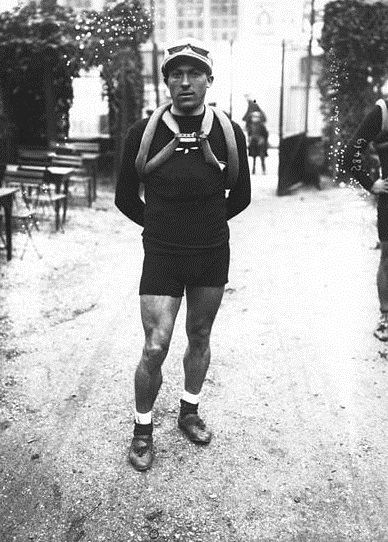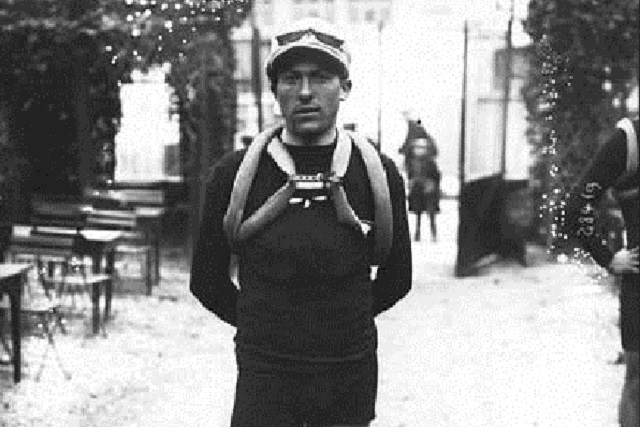By Graham Healy
One hundred years ago today, Italy became involved in World War One, when they fired their first shots at the Austro-Hungarian positions Cervignano del Friuli, which was captured a few hours later. An estimated 1,000,000 Italian soldiers and civilians would die during the war.
Amongst those who would go and to fight and die for his country was the 1913 Giro d’Italia winner, Carlo Oriani. Oriani had been born in the commune of Cinisello Balsamo in Lombardy in 1888. He started work at an early age in nearby Sesto San Giovanni, which had become the home of many industries, where he found work as a stonemason. He also developed an interest in cycling around this time, and he used to split his time between work and cycling. He initially raced as an independent, but in 1909, he signed for the Stucco team.
His first big win came in the 1912 edition of the Tour of Lombardy, when he managed to outsprint his compatriot Enrico Verde and Frenchman Maurice Brocco at the finish in Milan. However, Oriani went off to fight for his country in the Italo-Turkish war, before returning to take part in the following year’s Giro d’Italia.
In 1913, the Giro was run on a points system, rather than by time. Oriani had started the race off slowly but gradually crept on GC. His bid for glory received an unexpected bonus on the fourth stage though, as one of the pre-race favourites, Carlo Galetti was forced to retire, after breaking his foot.
Oriani would be incredibly consistent throughout that Giro despite not claiming any stage wins. Oriani took over leadership of the race after the penultimate eighth stage to Rovigo, with just a slender two point lead over Giuseppe Azzini.
The final stage to Milan was won by previous race leader Eberardo Paversi with Oriani in second. He ended up winning the Giro by six points from Paversi who had leapfrogged over Azzini into second. He had not only won the Giro, but he became the first ever Grand Tour winner to go through the race without winning a stage. An estimated 100,000 fans witnessed his triumph at Parco Trotter in Milan.
Two years later Oriani would rejoin the Italian Army and was with the Bersaglieri when they fought at the Battle of Caporetto in 1917. The battle took place from the 24th of October to the 19th of November, near to the town of Kobarid on the Austro-Italian front.

The Giro winner survived the battle, but the Italians were forced to retreat to the Tagliamento river with the enemy forces in pursuit. Oriani was amongst the men who were placed at the river bank to help defend the area and allow his comrades to cross the river. Some reports suggest that they came under enemy fire, and Oriani was forced to jump into the river’s icy waters. Other reports indicate that Oriani had jumped in to try and save a drowning comrade.
Regardless of what happened, Oriani nearly drowned in the currents of the fast flowing river, but eventually managed to reach the western bank. Unfortunately, having to endure the bitter temperatures in wet clothes took its toll on Oriani and he developed a fever a few days later.
He was taken to hospital where he was diagnosed with pneumonia. His health deteriorated, and by early December, it was clear that he would not recover. His wife was summoned and she just managed to arrive at his bedside, before he died on the 3rd of December. He was just 29 years-old.









